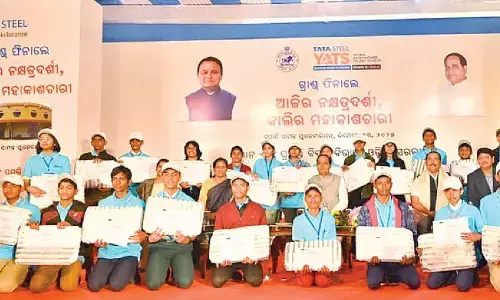Mission Mausam: Centre to install wider network of radars, wind profilers by 2026
Share :

Amid rising global warming and related climate challenges around the world, the Union government's Mission Mausam is expected to boost India’s weather and climate forecasting by 2026, said MoES Secretary.
New Delhi : Amid rising global warming and related climate challenges around the world, the Union government's Mission Mausam is expected to boost India’s weather and climate forecasting by 2026, said MoES Secretary.
Approved by the Union Cabinet this week, the Rs 2,000 crore ambitious initiative aims to make India ‘Weather Ready’ and ‘Climate Smart’.
The mission, to be implemented during 2024-26, will help India mitigate the impact of climate change and extreme weather events and strengthen the resilience of communities.
"Mission Mausam will exponentially enhance the country’s weather and climate observations, understanding, modelling and forecasting”, said Dr M Ravichandran, Secretary, MoES on Friday.
“By March 2026, we are looking at installing a wider network of radars, wind profilers, and radiometers for better observations,” he added.
The proposed Mission Mausam aims to develop cutting edge weather surveillance technologies and systems; implement higher resolution atmospheric observations with better temporal and spatial sampling/coverage; implement next-generation radars, and satellites with advanced instrument payloads.
It will also implement high-performance computers (HPC); improve understanding of weather and climate processes and prediction capabilities; develop improved Earth system models, and data-driven methods (use of AI/ML), technologies for weather management.
The “mission aims to establish 50 Doppler Weather Radars (DWR), 60 Radiosonde/Radio Wind (RS/RW) stations, 100 disdrometers, 10 Wind Profilers, 25 radiometers, 1 Urban testbed, 1 Process testbed, 1 Ocean Research station and 10 Marine Automatic Weather Stations with upper air observation,” Ravichandran said.
According to MoES Secretary, Mission Mausam will improve forecasts on both spatial and temporal scales and air quality data and help strategise weather management/intervention in the long run.
The initiative will also help better understand the physical processes and the science of weather forecasting.
“There will be improved data assimilation with increased ingestion of the observations. We will also fuse physics-based numerical models and data-driven AI/ML to improve the forecasts. We would witness more innovations, research and development, and advancements in atmospheric sciences,” said Ravichandran.
With the new initiative, no weather system in the country will go undetected, he added.
Mission Mausam will primarily be implemented by three institutes of the MoES: IMD, NCMRWF and the Indian Institute of Tropical Meteorology.


















